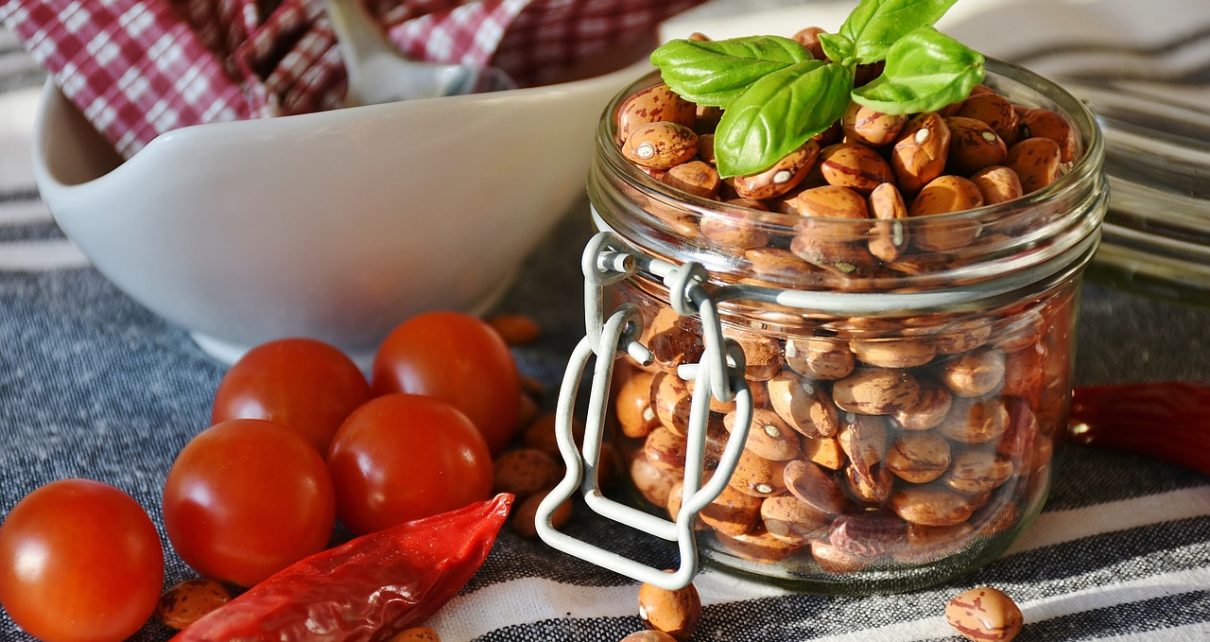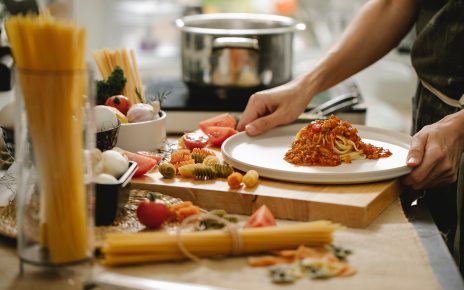Incorporating high-protein, meatless foods into your diet doesn’t mean sacrificing flavor or satisfaction. Whether you’re a vegetarian, vegan, or simply looking to reduce your meat consumption, there are plenty of delicious and nutritious options to keep you full and energized. Here’s a detailed look at some of the best high-protein, meatless foods that are both tasty and satisfying.
1. Quinoa: The Ancient Grain Powerhouse
- Protein Content: 8 grams per cup (cooked)
- Nutritional Benefits: Quinoa is often called a superfood, and for good reason. It’s a complete protein, meaning it contains all nine essential amino acids that your body can’t produce on its own. It’s also high in fiber, magnesium, and iron, making it a well-rounded choice for any meal.
- Culinary Uses: Quinoa’s mild, nutty flavor and fluffy texture make it incredibly versatile. It works well as a base for grain bowls, mixed into salads, or served as a side dish. You can even use it in place of rice or pasta for a protein boost.
2. Lentils: The Hearty Legume
- Protein Content: 18 grams per cup (cooked)
- Nutritional Benefits: Lentils are a nutritional powerhouse, rich in protein, fiber, and essential vitamins and minerals like folate and iron. They’re also low in fat and have a low glycemic index, which helps stabilize blood sugar levels.
- Culinary Uses: Lentils come in several varieties, including brown, green, and red, each with its own unique texture and flavor. They’re perfect for hearty soups, stews, curries, and salads. Try making a warm lentil salad with roasted vegetables or a spicy lentil soup for a comforting, protein-packed meal.
3. Chickpeas: The Versatile Legume
- Protein Content: 15 grams per cup (cooked)
- Nutritional Benefits: Chickpeas, also known as garbanzo beans, are high in protein, fiber, and a variety of vitamins and minerals, including manganese and folate. They’re also a good source of plant-based iron and can help lower cholesterol levels.
- Culinary Uses: Chickpeas are incredibly versatile. They can be roasted for a crunchy snack, mashed into creamy hummus, or added to soups, stews, and salads. You can also use chickpea flour to make gluten-free baked goods or try a chickpea-based curry for a hearty, flavorful dish.
4. Tofu: The Classic Meat Alternative
- Protein Content: 10 grams per 1/2 cup
- Nutritional Benefits: Tofu is made from soybeans, making it a complete protein source. It’s also low in calories and contains all eight essential amino acids. In addition, tofu is rich in iron and calcium, especially when made with calcium sulfate.
- Culinary Uses: Tofu has a neutral flavor and a firm texture, making it a blank canvas for a variety of dishes. It can be stir-fried, grilled, baked, or blended into smoothies for added protein. Marinating tofu before cooking helps it absorb flavors, making it a delicious addition to stir-fries, salads, or grain bowls.
5. Tempeh: The Protein-Rich Fermented Soy
- Protein Content: 21 grams per 1/2 cup
- Nutritional Benefits: Tempeh is made from fermented soybeans, which gives it a higher protein content than tofu. It’s also rich in probiotics, which can improve gut health, and it contains a good amount of fiber, vitamins, and minerals, including calcium and iron.
- Culinary Uses: Tempeh has a firm texture and a nutty, earthy flavor that holds up well in a variety of dishes. It can be sliced and added to sandwiches, crumbled into salads, or marinated and grilled. Tempeh also makes a great meat substitute in stir-fries, tacos, or pasta dishes.
6. Greek Yogurt: The Creamy Protein Source
- Protein Content: 10 grams per 100 grams
- Nutritional Benefits: Greek yogurt is a rich source of protein, calcium, and probiotics, which can aid in digestion. It’s also lower in lactose than regular yogurt, making it a good option for those who are lactose intolerant.
- Culinary Uses: Greek yogurt is thick, creamy, and slightly tangy. It’s perfect for breakfast with fruit and granola, as a base for smoothies, or as a substitute for sour cream in savory dishes. You can also use it to make creamy salad dressings or blend it into soups for added protein.
7. Edamame: The Protein-Packed Snack
- Protein Content: 17 grams per cup (cooked)
- Nutritional Benefits: Edamame, or young soybeans, are not only high in protein but also rich in fiber, vitamins, and minerals like folate, vitamin K, and magnesium. They’re also low in calories and have a high antioxidant content.
- Culinary Uses: Edamame is often enjoyed as a simple snack, steamed and sprinkled with a little salt. It can also be added to salads, stir-fries, or grain bowls for a protein boost. For a unique twist, try blending edamame with garlic, lemon juice, and olive oil to make a vibrant green hummus.
8. Seitan: The “Wheat Meat”
- Protein Content: 21 grams per 3 ounces
- Nutritional Benefits: Seitan, also known as wheat gluten, is a highly concentrated source of protein. It’s also low in fat and carbohydrates, making it a popular choice for those looking to boost their protein intake while keeping calories in check.
- Culinary Uses: Seitan has a chewy, meat-like texture, making it an excellent substitute for meat in dishes like stir-fries, sandwiches, and stews. It can be seasoned and grilled, sliced and sautéed, or even used as a topping for pizza. Its ability to mimic the texture of meat makes it a favorite among vegetarians and vegans.
9. Hemp Seeds: The Nutrient-Dense Superseed
- Protein Content: 10 grams per 3 tablespoons
- Nutritional Benefits: Hemp seeds are not only high in protein but also rich in omega-3 and omega-6 fatty acids, which are essential for heart health. They also contain a good amount of fiber, vitamins, and minerals, including magnesium and iron.
- Culinary Uses: Hemp seeds have a mild, nutty flavor and a soft, crunchy texture. They can be sprinkled on salads, added to smoothies, or mixed into yogurt and oatmeal. You can also use them to make homemade protein bars or energy bites.
10. Chia Seeds: The Tiny Nutritional Powerhouses
- Protein Content: 4 grams per 2 tablespoons
- Nutritional Benefits: Chia seeds are a good source of protein, fiber, omega-3 fatty acids, and antioxidants. They’re also high in calcium, phosphorus, and magnesium, which are important for bone health.
- Culinary Uses: Chia seeds have a neutral flavor and a unique gel-like texture when soaked in liquid. They’re great in puddings, smoothies, or sprinkled on cereal. You can also use them as an egg substitute in baking or make chia seed jam by mixing them with fruit and letting them thicken.
11. Cottage Cheese: The Creamy, Protein-Rich Dairy
- Protein Content: 14 grams per 1/2 cup
- Nutritional Benefits: Cottage cheese is a low-calorie, high-protein food that’s also rich in calcium and B vitamins. It’s an excellent source of casein protein, which is slowly digested and can help keep you full for longer.
- Culinary Uses: Cottage cheese is creamy and slightly tangy, making it a versatile ingredient. It can be enjoyed on its own, with fruit, or mixed into savory dishes like salads and pasta. Try spreading cottage cheese on toast with avocado or mixing it with herbs for a high-protein dip.
12. Nuts and Nut Butters: The Protein-Rich Snacks
- Protein Content: 6-8 grams per ounce (for nuts), 8 grams per 2 tablespoons (for nut butter)
- Nutritional Benefits: Nuts and nut butters are packed with protein, healthy fats, fiber, and a range of vitamins and minerals, including vitamin E, magnesium, and selenium. They’re also rich in antioxidants and can help reduce inflammation.
- Culinary Uses: Nuts and nut butters are incredibly versatile. Enjoy them as a snack, add them to smoothies, or spread nut butter on toast or fruit. You can also use nuts in baking or as a crunchy topping for salads and yogurt.
13. Black Beans: The Protein-Packed Legume
- Protein Content: 15 grams per cup (cooked)
- Nutritional Benefits: Black beans are a great source of protein, fiber, and a variety of vitamins and minerals, including folate, iron, and magnesium. They’re also rich in antioxidants, which can help protect your cells from damage.
- Culinary Uses: Black beans have a rich, hearty flavor that works well in a variety of dishes. Use them in soups, stews, and chili, or add them to salads and grain bowls. Black beans also make a great filling for tacos and burritos, or try them in a veggie burger for a satisfying, protein-packed meal.
14. Pumpkin Seeds: The Crunchy, Protein-Rich Seeds
- Protein Content: 7 grams per ounce
- Nutritional Benefits: Pumpkin seeds are not only high in protein but also rich in healthy fats, fiber, and a range of vitamins and minerals, including magnesium, zinc, and iron. They’re also a good source of antioxidants, which can help reduce inflammation.
- Culinary Uses: Pumpkin seeds have a crunchy texture and a slightly nutty flavor. They’re great as a snack, sprinkled on salads, or added to granola. You can also use them in baking, or try making your own pumpkin seed butter for a protein-rich spread.
15. Peas: The Sweet, Protein-Packed Legume
- Protein Content: 8 grams per cup (cooked)
- Nutritional Benefits: Peas are a good source of protein, fiber, and a variety of vitamins and minerals, including vitamin C, vitamin K, and folate. They’re also low in calories and have a high antioxidant content.
- Culinary Uses: Peas are sweet and tender, making them a great addition to soups, salads, pasta dishes, or as a simple side dish. Try adding peas to a vegetable stir-fry, mixing them into a pasta salad, or making a creamy pea soup for a protein-rich meal.
Whether you’re a vegetarian, vegan, or simply looking to cut back on meat, there are plenty of delicious, high-protein foods that can help you meet your nutritional needs. From legumes like lentils and chickpeas to seeds like hemp and chia, these meatless protein sources are not only nutritious but also versatile and satisfying. Incorporating these foods into your diet can help you stay energized and full while enjoying a variety of tasty meals.



